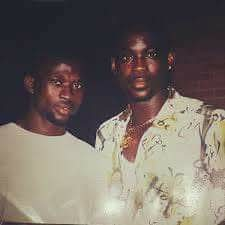
Introduction
I have been refraining from contributing to the discourse and arguments regarding recent controversies and disputes ongoing in the Fuji music industry for reasons I want to adduce to growing over certain pettiness. Gone were those days, I can argue about why Pasuma is ahead of his contemporaries. I have lost the Mojo since when Pasuma and Osupa have had reason to leave their past behind.First of all, I am an avid Fuji follower and listener. Even as a budding singer with more than fifty birthday musical tracks for different people, I would say I derived my inspiration majorly from Fuji and later from what is assumed to be Islamic music.This piece aims to delve into the ongoing seniority clash between Pasuma and Malaika while reflecting on my journey and connection to Fuji music.My Background with Fuji MusicI grew up in an environment where hip-hop, blues, and other foreign songs were a rarity. It was a hood where you could only have a connection with local genres like Dadankuada, Baalu, Senwele, Fuji and Islamic Gospel. My first encounter with an interest in blues was around 2005–2006 through some of my friends: Shakiru Daud, his brother, Ridwan Daud, and their sister, Shakirat Daud, who were avid listeners of Celine Dion and Westlife. The one that resonated with me most was Westlife’s “I Should Have Seen It Coming,” which deals with heartbreak from a loved one. I loved the lyrics as they resonated with what I was going through then.Back to Fuji. I grew up listening to the late Sikiru Ayinde Agbajelọla Barrister through my mum, a Barusati fan who used to mime some of his songs while doing house chores. Then there was Pasuma, who was trending in the mid-’90s; my cousin’s sister, in her teens, used to sing his songs, especially the wave-making Orobokibo. Either through late-night events such as wedding events or from our brothers doing Aso-Oke weaving, you would have to listen to Pasuma’s albums or live performances at Idi Ofi and sometimes Osupa.My first encounter with Alhaji Sule Alao Malaika’s song was through his album Recompense. That album was a major hit and one of his best to date. As a tailor apprentice in the year 2000, my boss used to play the album back and forth before another hit, Interlink, took over. I can sing along to them to a reasonable extent.My Full Immersion into FujiMy full immersion into the world of Barrister happened from 2001 to 2003 when I was learning printing and publicity under Alhaji Akeem Abimbola, popularly known as “Ten-Ten,” at Adangba. Oga was a die-hard Barry fan, and we had loads of his albums that we used to play for our leisure. Almost all of us used to sing along to these albums. Omorapala Overthrow bounded me into the world of Abass Akande Obesere and his Asakasa lewd lyrics.There was a musical recording studio opposite our shop at Ile Olororo that exposed me more to the Fuji world with other artists you can think of from K1 De Ultimate downward. Then came the generation of Wale Tekoma, Remi Aluko, and later the whizkids like Shanko Rasheed, Wasiu Container, Konkolo Wally G, and others. Also, the musical calendars that had various pictures of Fuji artists, usually found inside barber shops, gave us insights into the profiles and personalities of these people working in the showbiz and entertainment industry.Fuji Rivalries and My Favorite ArtistsFuji, like many music industries, thrives on controversies and superiority fights, from the days of Barrister to Killington. But the one who elevated the rivalry for my generation was Pasuma and his archrival-turned-friend, Saheed Osupa, especially from the early 2000s.As early as 1999, I chose Pasuma as my favourite amongst them, and later Malaika due to the brotherly relationship and affection he had for Pasuma. Whosoever associated with Pasuma or whatever had his endorsement became my choice and vice versa. I began to give Osupa’s songs attention when he first reconciled with Pasuma through Two Big Elephants Live performance.The Latest Seniority FightsIt all started recently with Alh. Adebisi Akande Taye Currency and Pasuma, before it graduated to Obesere and Pasuma, and it is about to gain more traction with Malaika, who has been indirectly claiming seniority over Pasuma and Osupa in the industry. However, all these fracas were much elevated by us fans of these artists.In the hierarchy of the Fuji structure, it has always been Pasuma, Osupa, then Malaika and Atawewe, amongst others. This classification is undisputable in terms of age, rise to prominence, and influence in the industry. By the year of the album release, Osupa was ahead (1992), followed by Pasuma (1993) and then Malaika (1994). By acclaimed years on stage, Osupa and Malaika were ahead (1983), but that was disputable, especially if we consider professionalism and the ability to make firm decisions and take leadership responsibility, where age plays a role.If we analyze these years with their ages, Pasuma was 17 years old, Osupa was 14 years old, and Malaika was 11 years old. At 17, Pasuma had completed secondary school before taking Fuji has career. This was a mature age when it was easy for a teenager to decide what they wanted to do in life and pursue it with all vigour and determination, the exact year when most teenagers entered tertiary institutions. Certainly, before this year and the decision to pursue a music career, there were at least three to four years when he would have been doing behind-the-scenes trials amongst his peers. He stated some years back that he used to sing in class to entertain his classmates, who would improvise drums with tins and desks, especially during sports events.For Malaika, who is claiming 41 years on stage, while I wouldn’t like to dispute him, the claim is contestable when we consider professional maturity and ability to make firm decisions and lead a team successfully. This is somewhat relative to Osupa, who was also 14 years of age when he started. However, Osupa’s case is different because his late father was an unsung Sakara musician, a contemporary of the likes of Barrister and the late Alhaji Dauda Akanmu Epo-Akara. Unlike Pasuma and Malaika, music was hereditary to him, and he had earlier exposure to it. So, to accept the fact that Malaika is senior to Pasuma and Osupa will forever remain a farce to the larger audience of Fuji music.The case of Ilorin Fuji maestro and current State Chairman of the Performing Musician Association of Nigeria (PMAN), Alhaji Ismaheel Abolaji Adisa Owala, further illustrates this point. Owala celebrated 45 years on stage eleven years ago. That year, one of my brothers, a contemporary of his age, contested the claim and, to date, will not agree that Adisa Owala has been on stage for 56 years. Owala likely included his formative years following his late father, who was also a musician (though not Fuji).My Journey and Connection With the Entertainment Industry As a Case StudyI am a person who had earlier exposure to facing a crowd from a tender age. I always have one or two things to do with the microphone at Madrasah during our Mawlud Nabbiy celebration. As far back as 2001, I could have pursued a career in Fuji music, as I used to be the lead vocalist amongst my peers during Ramadan when we would sing and drum around the streets to receive money and goodies both at night and during Sahur.One memorable encounter was with Alhaji Lemmy Adisa, an Ilorin-born Fuji artist and mentee of King Saheed Osupa. One of those nights, when we went to his shop at Adangba to sing for him, he showed interest in mentoring me. While I never pursued this path professionally, the memory stays with me, and I have continued to explore music informally by recording songs for others that are danceable and enjoyable.As someone who earns a living with broadcasting, I have been chanting Ewi and doing MC work as far back as 2008. Pursuing a career in the broadcasting industry has been my goal since then, but my first professional exposure to the job was in 2013 during my undergraduate years when my friend, Jamiu Bello and I were both volunteering for Unilorin FM under the tutelage of Alhaji Idris Alooma, now the General Manager of the station. Hence, that is the year I am counting for my entrance into the field.Pasuma and Malaika’s BondThe relationship between Paso and Mala started in the ’90s, and sometime around 1995–96, when Pasuma’s mother returned from Hajj and wanted to host a Sabaka night. According to Pasuma, Atawewe, who was also in that year’s Hajj with Pasuma’s mother, had gotten assurance to perform at the event from Alhaja. But Pasuma, out of love for Malaika, who was introduced to him by Tao Balinga, gave the show to Mala instead of Wewe, which led to the first rift between Wewe and Paso.Pasuma has been a model for Malaika from way back; in fact, Malaika had at least 45–50% of his fans from his relationship with Pasuma. Hence, to place Malaika in the rank or ahead of Pasuma in the industry will never augur well with history. There are many instances with evidence of where Pasuma and their other Senior colleagues refered to Malaika has his younger brother or protege and this has never been disputed by Malaika until around 2005 when he proclaimed himself as the King of the New Generation that involved Pasuma and Osupa. Just like one Yoruba philosophical saying popularise by the late Alaafin Oyo’s talking drummers: “…aburo ẹni to loun lẹgbọn ẹni.”ConclusionFuji thrives on controversies, but these rivalries should be seen as part of its creative evolution. The legacies of Pasuma, Malaika, and Osupa are indelible, and their contributions should be celebrated rather than contested over seniority claims.Fuji remains a source of joy and inspiration to many, myself included. We must focus on preserving this rich culture for generations to come.


